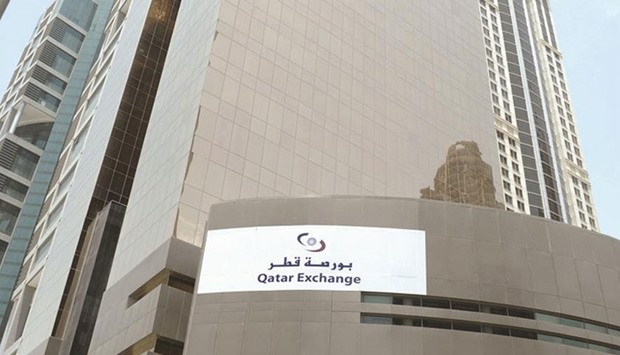Modest gains in large cap equities rather lifted the sentiments in bourse during the week, which saw a firm announcement that Doha Bank and Masraf Al Rayan exchange traded funds will dot the local equity markets by November-December this year.
Although there was a sustained net buying by foreign institutions; their domestic counterparts displayed stronger affinity towards profit booking during the week, which saw Islamic stocks gain slower than the conventional ones.
Trade turnover and volumes were otherwise on the decline – mainly on insurance, telecom and industrials -- during the week, which witnessed QNB report 11% jump year-on-year in net profit to QR9.7bn in the first nine months of this year.
Telecom, transport and banking counters witnessed higher than average buying interests during the week which however saw Arab Petroleum Investment Corporation view that Qatar’s reign as the world’s largest liquefied natural gas exporter may end by 2017 as liquefaction capacity in Australia reaches 120bcma, and new supplies from the US also begin to kick in.
Foreign institutions were mainly instrumental in imparting a 0.32% addition to the main barometer of the QSE during the week, which saw banking, telecom, industrials and realty stocks together constituted about 87% of the total trade volumes.
The bullish outlook of non-Qatari individual investors and a weaker net selling by local retail investors also played their part in the upbeat mood in the QSE during the week, which saw Qatar Electricity and Water say its consortium has operationalised Nebras Power Company’s solar power plant in Jordan.
Elsewhere in the Gulf region, Saudi Arabia gained 1.11%, Muscat (0.9%), Bahrain (0.66%) and Kuwait (0.15%); whereas Abu Dhabi and Dubai fell 0.97% and 0.59% during the week.
The Qatari bourse’s year-to-date losses were contained at 0.38% compared to 17.62% in Saudi Arabia, 5.87% in Bahrain and 5.11% in Kuwait; while Dubai rose 5.84%, Muscat (4.7%) and Abu Dhabi (0.93%).
Opening the week marginally weak at 10,356 points, the market however gained in the subsequent two days to reach a high of 10,431 points, as oil prices had touched $53 a barrel. Thereafter, profit booking ensued for the rest of the session but overall the 20-stock Qatar Index settled 33 points higher during the week.
Tracking the main barometer, the 20-stock Total Return Index also gained 0.32%, All Share Index (comprising wider constituents) by 0.18% and Al Rayan Islamic Index 0.03% during the week which saw the Ministry of Development Planning and Statistics data reveal that economically active expatriate population in Qatar fell 1.6% in the second quarter of this year compared to that in the first quarter of 2016 as total population declined.
Telecom stocks shot up 3.09%, transport (1.63%), banks and financial services (0.37%) and industrials (0.03%); whereas real estate, consumer goods and insurance fell 1.06%, 0.61% and 0.01% respectively during the week, which saw an Indosuez report suggest that the Gulf bond issuance are expected to witness continued increase.
Market capitalisation rose 0.27% or more than QR1bn to QR558.12bn mainly on 0.62% jump in large cap equities; while small, micro and midcaps fell 0.74%, 0.59% and 0.16% respectively during the week which saw Vodafone Qatar and Qatari Investors Group dominate the trading ring in terms of volume and value.
Large cap equities have reported 0.5% year-to-date gains; whereas small, mid and microcaps’ losses were at 5.95%, 4.49% and 0.95% respectively.
Of the 44 stocks, as many as 23 declined, while only 19 advanced and two were unchanged. Five of the 13 banks and financial services; four of the eight industrials; three each of the nine consumer goods and the three transport; two of the four realty; and one each of the five insurers and the two telecom stocks closed higher during the week.
Among the major gainers were Ooredoo, Nakilat, Qatari Investors Group, Aamal Company, Qatar Islamic Bank, QNB, Masraf Al Rayan and Barwa; while Qatar Electricity and Water, Ezdan, Vodafone Qatar, Commercial Bank, Gulf International Services, al khaliji, Qatar National Cement, Dlala and Alijarah Holding saw their stocks lose sheen during the week.
Foreign institutions’ net buying stood at QR181.87mn compared to QR183.69mn the previous week.
Local retail investors’ net profit booking weakened perceptibly to QR53.05mn compared to QR96.55mn the week ended October 6.
Non-Qatari individual investors turned net buyers to the tune of QR5.41mn against net sellers of QR12.23mn the previous week.
However, domestic institutions’ net profit booking strengthened considerably to QR134.32mn compared to QR74.81mn the week ended October 6.
Total volume fell 17% to 23.9mn shares, value by 20% to QR832.75mn and transactions by 19% to 10,751 during the week.
There was a 76% plunge in the insurance sector’s trade volume to 0.33mn equities, 83% in value to QR19.7mn and 23% in deals to 368.
The telecom sector’s trade volume plummeted 38% to 6.05mn stocks and value by 30% to QR134.51mn; while transactions were up 10% to 1,888.
The industrials sector reported 18% shrinkage in trade volume to 4.51mn shares, 18% in value to QR246.36mn and 18% in deals to 2,085.
The real estate sector’s trade volume tanked 13% to 3.6mn equities, value by 17% to QR72.06mn and transactions by 26% to 1,451.
The market witnessed 12% decline in the consumer goods sector’s trade volume to 0.97mn stocks but on 24% jump in value to QR44.96mn; even as deals fell 20% to 1,040.
However, the transport sector’s trade volume soared 70% to 1.84mn shares, whereas value shrank 5% to QR47.9mn and transactions by 32% to 614.
The banks and financial services sector saw 14% expansion in trade volume to 6.6mn equities and 2% in value to QR267.25mn but on 25% slump in deals to 3,305.
In the debt market, there was no trading of treasury bills and government bonds during the week.


